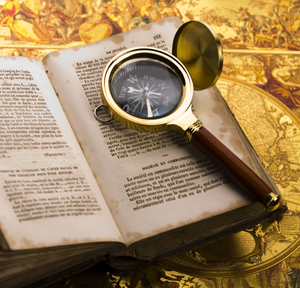Art
EXCLUSIVE GUEST ARTICLE: Are Passion Investments Being Adequately Protected?

In this article, AIG Private Client Group explores best practices for valuing collections.
Today, high value collectibles such as rare cars, art or fine wine are not just for those who have a genuine passion for these items. Increasingly, they are considered a portfolio diversification tool to help investors ride out market volatilities. The continued growth of wealth worldwide is fuelling appetite for such exotic goods, largely thanks to a burgeoning middle class in Asia. In this article, Rand Silver, global director, art collection management for AIG Private Client Group, discusses how these assets demand more protection than ever whether their owner is a collector, enthusiast, investor, inheritor or other.
This publication is grateful for the commentary and invites readers to respond. As ever, the views expressed are not necessarily shared by the editors.
Trillions of pounds in art, antiques, jewellery, wine, collector automobiles and other collectibles are held privately. Some are owned by those who have spent a lifetime assembling world-class collections. Much, however, is owned by people who do not consider themselves “collectors”, with valuables that have been inherited, received as gifts or purchased to decorate a home. Either way, the value of these assets may increase dramatically over time, regardless of seasonal or annual trends. Because artwork and other valuables constitute a meaningful asset class, maintaining updated values of those assets is an important part of protecting clients’ portfolios.
A valuation is often the basis upon which insurance values are set, and the valuation document provides an important record of the owner’s holdings. If an item is lost, stolen or damaged, an outdated valuation could limit your client’s ability to be fully compensated through his or her insurance policy.
Regardless of your clients’ collecting levels, the following guidelines will help them evaluate and act on their valuation needs.
1. Determine the need.
There are a number of reasons why your clients might need a
valuation. Current valuations may be required for insurance, when
donating or gifting items, when involved in estate or divorce
situations, for Her Majesty’s Revenue and Customs when
contemplating a sale, or when using valuable items as collateral
for a loan. There are a number of different value types that
correspond to each type of valuation, including fair market
value, retail replacement value, or marketable cash value. Retail
replacement value—generally the highest figure for personal
property—should be used as the basis for insuring valuable
objects. To avoid confusion, it is important to note that no
valuation serves as an authentication.
2. Consult the right professional.
Employing a valuer with appropriate expertise is paramount. Your
valuer should be a professional who performs this type of work on
a regular basis and who is a specialist in the type of item being
evaluated. Don’t be shy about reviewing the valuer’s resume to
gauge his or her experience. A fine art specialty insurance
provider typically has strong relationships with a wide range of
valuation experts and can be a resource for referrals.
3. Consider it all.
It’s not just the fine art on your clients’ walls that needs to
be valued. Men’s watches and antique carpets are genres of
valuables that are often overlooked when obtaining a valuation.
These genres are also highly susceptible to loss and damage,
respectively. Also, be sure to consider your clients’ antique
cars and investment-grade wine; both are collecting categories
that have been rapidly increasing in interest and value.
4. Stay current.
No hard and fast rule exists for when clients should obtain
updated insurance valuations, because different segments of the
art and valuables markets appreciate at varying rates. However, a
good rule of thumb is to get an updated valuation every three or
four years. This may sound extreme, but depending on the specific
genre in question, insurance claims experience has shown that
even a three-year interval between valuations can be inadequate
in an active market. Specific genres of art can enjoy periods of
unusually strong sales, and record-breaking sales for a
particular artist can fuel a spike in prices. Similarly, the
ever-changing prices of precious metals or stones dramatically
impact jewellery values. As a result, your clients may discover
the need to re-evaluate some parts of a collection more
frequently than others.
5. Connect the dots.
Effective collection management means more than merely
determining value. Just as hedging tools or stop-loss strategies
protect a financial portfolio, tools exist to protect a
collection’s portfolio, including comprehensive insurance and
dedicated risk management, along with expert valuations. Because
volatile financial markets may be the norm for the foreseeable
future, moves to protect tangible assets should be an integral
part of managing wealth.
Conclusion
Remember, by encouraging your clients to take advantage of
appropriate collection management expertise, you are helping
them protect their financial worth as well as their emotional and
aesthetic investments.